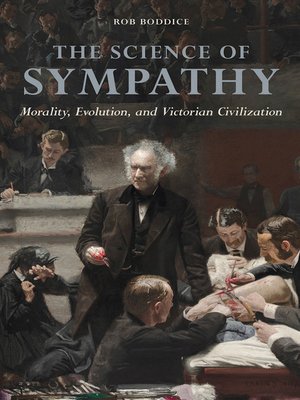The Science of Sympathy
ebook ∣ Morality, Evolution, and Victorian Civilization · History of Emotions
By Rob Boddice

Sign up to save your library
With an OverDrive account, you can save your favorite libraries for at-a-glance information about availability. Find out more about OverDrive accounts.
Find this title in Libby, the library reading app by OverDrive.



Search for a digital library with this title
Title found at these libraries:
| Library Name | Distance |
|---|---|
| Loading... |
In his Descent of Man, Charles Darwin placed sympathy at the crux of morality in a civilized human society. His idea buttressed the belief that white, upper-class, educated men deserved their sense of superiority by virtue of good breeding. It also implied that societal progress could be steered by envisioning a new blueprint for sympathy that redefined moral actions carried out in sympathy's name. Rob Boddice joins a daring intellectual history of sympathy to a portrait of how the first Darwinists defined and employed it. As Boddice shows, their interpretations of Darwin's ideas sparked a cacophonous discourse intent on displacing previous notions of sympathy. Scientific and medical progress demanded that "cruel" practices like vivisection and compulsory vaccination be seen as moral for their ultimate goal of alleviating suffering. Some even saw the so-called unfit—natural targets of sympathy—as a danger to society and encouraged procreation by the "fit" alone. Right or wrong, these early Darwinists formed a moral economy that acted on a new system of ethics, reconceptualized obligations, and executed new duties. Boddice persuasively argues that the bizarre, even dangerous formulations of sympathy they invented influence society and civilization in the present day.|
Cover
Title
Contents
Acknowledgments
1. Emotions, Morals, Practices
2. Sympathy for a Devil's Chaplain
3. Common Compassion and the Mad Scientist
4. Sympathy as Callousness? Physiology and Vivisection
5. Sympathy, Liberty, and Compulsion: Vaccination
6. Sympathetic Selection: Eugenics
Conclusion: Scientism and Practice
Notes
Bibliography
Index
|
"Exemplary. Boddice demonstrates that the culture of Victorian science changed irreversibly what sympathy could mean, and how it could be felt. The book will be at the top of my list when people ask, 'What does it look like when you do the history of emotions?' This is what it looks like."—Daniel M. Gross, author of The Secret History of Emotion: From Aristotle's Rhetoric to Modern Brain Science
"Stimulating and interesting. Boddice has taken some of the most important topics in nineteenth-century history and made them his own."—Joanna Bourke, author of The Story of Pain: From Prayer to Painkillers
"A landmark work in the history of science and the emotions."—Journal of the History of Medicine and Allied Sciences
|Rob Boddice works at the Department of History and Cultural Studies, Freie Universität Berlin. His books include Edward Jenner and Pain: A Very Short Introduction.
"Stimulating and interesting. Boddice has taken some of the most important topics in nineteenth-century history and made them his own."—Joanna Bourke, author of The Story of Pain: From Prayer to Painkillers
"A landmark work in the history of science and the emotions."—Journal of the History of Medicine and Allied Sciences
|Rob Boddice works at the Department of History and Cultural Studies, Freie Universität Berlin. His books include Edward Jenner and Pain: A Very Short Introduction.







